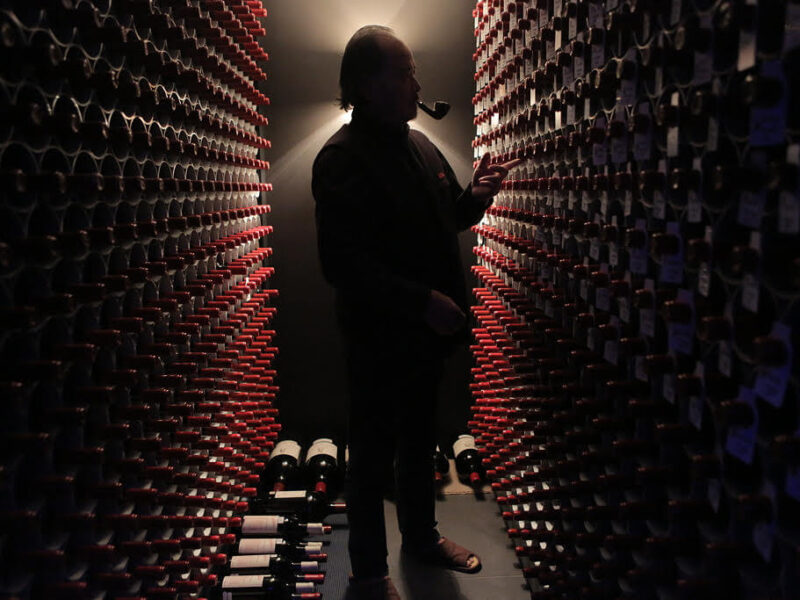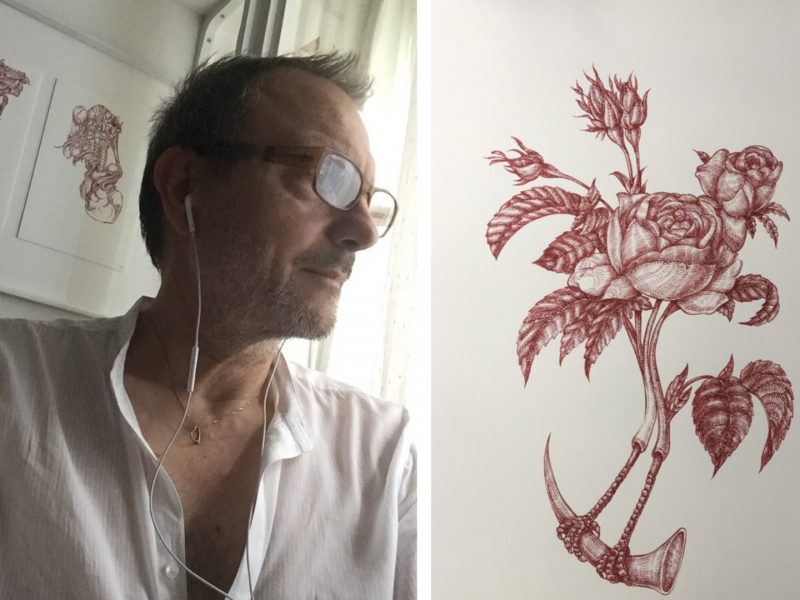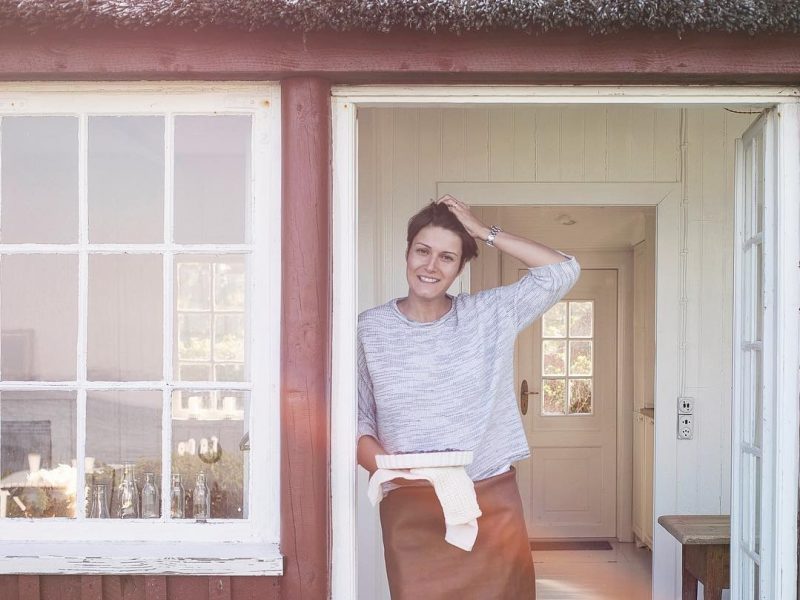
Levon Bagis: The Story of Wine from Anatolia to World
As a true wine enthusiast and Istanbul lover, Levon Bağış talks about his latest book to be published on the story of wine in Anatolia and his wine bistro that pair the best local grapes with local dishes with a fine-dining touch.
When I visited Beirut in 2011 to prepare a tourist guide, I was astonished by the incredible vineyards in the Bekaa Valley. I was very surprised to learn that there was wine production in Syria as well! Do you get such reactions from the western people you meet? Do they go like: “Hey, do you produce wine in Turkey? Really?”
In fact, they have a reason to ask that. Whenever European TV channels report from Turkey, they show women feeding pigeons in front of the New Mosque, or oriental scenes from the Grand Bazaar, the Spice Bazaar, etc. When people are exposed to the country that way, they do not differentiate Turkey from any other Middle Eastern country. We are rapidly moving towards becoming one, though… Wine production in Turkey comes as a surprise to many. This is due to not having a good grasp of the subject matter, though, since Turkey is one of the oldest wine producing regions of the world, together with Armenia and Georgia. If we compare it with Lebanon; the production there is not very high either, but their producers are more visible, and have better connections with the rest of the world.
There must be a French influence…
Yes, the owners of the vineyards in Lebanon are mainly French Levantines, but it is “the story” that sells, like any other product. There are such legendary stories about the historic Chateau Musar, for example. During the Lebanese Civil War, it is told that the warring factions would declare ceasefire only when Chateau Musar was about to transfer grapes between its vineyards and winery controlled by different groups. The barricades had to open to move the grapes from one zone to the other! Actually, Turkey has a bigger story. If you think about it, Dionysus was born in this land. In the Old Testament it is mentioned that grape was first grown on the slopes of Ağrı Mountain (or Mount Ararat). There are almost 1000 local grape varieties in Turkey, but we do not embrace and use them, or tell their story.


WINE AND DINE ‘A LA TURCA’
In fact, we have rediscovered wine in the last 20 years in Turkey. I know that you have been working on a new book on wine culture. Do you aim to fill that gap?
I have been giving talks and seminars on wine culture for almost 20 years. In 2005, I prepared a booklet of 80 to 100 pages for the company I was working for at that time. Since then, this book has been in the hands of many people. I still get too many questions about the book and people still try to reach out to me with questions.
Are you talking about your book titled Şarabın ABC’si (ABC of Wine)?
Yes… I want to prepare a broader and more storied version of it. Otherwise, I don’t think the world needs yet another technical wine book!
Perhaps, Turkey needs…
No, not even in Turkey… There may not be serious wine literature in Turkey, but Şeyla Ergenekon’s Şarapla Tanışma (Meeting Wine) and Mehmet Yalçın’s A’dan Z’ye Şarap (Wine from A to Z) are really nice titles that offer plenty of technical knowledge and that could introduce you to wine culture. The book I imagine, on the other hand, focuses on the story of wine around the world and in Turkey, with its more sensory side touching people. There are a few very important wine tastings that changed the world, for example, as well as many scientific studies. I want to talk about such things a bit. If Herodotus talked about a grape variety 1000 years from now, I would like to tell it as well. It will be a book where stories and anecdotes come together, besides technical knowledge.
Books published in other parts of the world do not focus on our grapes, naturally. If someone will do it, we will do it. So, I do not attempt to describe all the 1000 local grape varieties, but 33 of them that we currently use in commercial winemaking. One more thing: The wine terminology we use in Turkey is a translated one. When you see two wine connoisseurs talking, it feels like watching a series on Netflix with subtitles.
Bad translation!
Yes, a little bit “Lost in Translation”… This is not only about the vocabulary used -or the lexical meaning- but also about the notions. Wine has been produced in this country for centuries -for thousands of years perhaps. Meals have been enjoyed with wine. This is the land where bread, cheese and wine (probably) were first made. This is where civilization was born. Humanity has fed on beer and wine, right from the start. When it comes to the harmony of food and wine, though, we always refer to France. Nobody knows which type of wine goes well with lakerda, but all know very well which wine would go fine with foie gras!
Is it possible to pair dolma (stuffed vegetables) with wine, for example? We do not have such notions!
I would tell that it pairs very well with çiğköfte.
PAIRING LOCAL GRAPES WITH LOCAL FOOD
How many kilometers have you covered around Turkey for this book so far? What have you learned?
I cannot calculate the number of kilometers we have made instantly, but we’ve had some excursions for taking pictures and talking to the producers. Although I travel a lot, these lands always impress me in one way or another. Actually, I am touched by being touched so much! You can see something different, every time you walk on the streets you know very well, even you have lived all your life. That is the magic of these lands, perhaps.
If I asked you to set a table for some guests who are not familiar with Anatolian grapes -and if you wanted to impress them- a little, what would you put on that table to accompany the wine?
I think one of the most precious gastronomic flavors of these lands is pastırma (or pastrami). Pastırma is amazing and it goes well with wine -I mean, its saltiness and spiciness… I would definitely put pastrami on the table first. I would definitely put lakerda. That is something unique to Istanbul and very important for human history. The first item traded from the Black Sea was salted fish. I like these types of contrasts a lot! At the time when the civilization flourished due to the salty fish trade along the Black Sea coast, the Scythians still used to sacrifice people. If I were to put a third gastronomical item, it would definitely be midye dolma (stuffed mussels) that is prepared in the old-fashioned, Armenian style. If you ask me, this may be the dish that best describes Anatolia. Spicy stuffed dishes are the typical feat of Eastern and Central Anatolia. Mussels and rice, as well as expensive ingredients such as pine nuts, currants and cinnamon, were typical of the court cuisine, on the other hand. All together, they form an amazing mix!
What kind of wine would you pair with midye dolma?
I think a Narince with its high acidity would be wonderful with stuffed mussels, and a glass of sparkling wine would be very nice with pastrami.
Hmm, an interesting match…
With lakerda, an Emir with high minerality from the high volcanic terroir of Cappadocia would be a beautiful match.
WINE TASTING EDUCATIONS
The limit is the sky, when it comes to wine tasting. Master sommeliers, for example, could blindly tell you the latitude and longitude the wine comes from. How is this possible? Do you have such a “nose”?
Sure, I do. But this is not rocket science. It could be gained through training. There are 250 or 270 Masters of Wine around the world. I doubt if we need any more. The training at that level are really serious and you have to commit yourself. I give the same example in all my wine tasting workshops: Anyone can play guitar if he / she tries hard enough, but not everyone can be a virtuoso, and he / she doesn’t have to be. Similary, you can still enjoy wine, even without reaching those heights. At the assessment phase of the WSET trainings, you are given a blind bottle and expected to know the grape variety, where it comes from and the price of the label (and this is very important!). You should be able to understand whether the wine you drink is good or not.
Is there a universal criterion for that?
Of course, there is. Wine tasting is not subjective. It may have some aspects that you can discuss, but it is very objective. At the international wine competitions that I chair as a jury, we usually taste 60-70 wines a day for 3-4 days in a row. Jury members disagree upon the quality of only 3 or 4 labels. We should remember this: A wine could be a good example of its genre, but that does not mean you will enjoy it. Or it could be an ordinary wine, but that does not mean you won’t be happy with it. I always give an example from the film industry. Nobody discusses Tarkovsky’s mastery as a director, but what’s the percentage of people who actually like his work? Instead, Spielberg is more popular.
You opened a very nice wine bistro called Foxy in Karaköy at December in 2019. Then, the world came to a halt due to the Coronavirus, when you had just started the engines! What did you aim with that place?
Maksut (Aşkar), who has been my friend for 25 years, and I had a lifelong dream. We talked about it so much that we were about to quit the idea in the end. “Let us not see each other anymore”, we said, “if we are not doing this project next year!” That’s how it all started. Let me summarize what we are trying to do at Foxy: We have too many unknown local grape varieties and wine styles in Turkey, including natural wines -even orange wines*.
There is another problem we suffer, though: When I say lakerda, people think of rakı. When I say pastrami, rakı comes to their mind. I say topik**, and rakı comes into the picture again! I love rakı and its rituals, but wine match with that table set up perfectly too! During the years we prepared the wine list of Neolokal, Maksut’s fine-dining restaurant, we have given a lot of thought to food and wine pairing. Foxy is a place that brings wine down to earth and serves it at a relaxed context, unlike the swanky white-tablecloth restaurants. We actually opened the place where we would be frequenters ourselves.
Can you list some of your favorite items on from the menu of Foxy?
We serve meat tartar, on a bed of Russian salad. Apart from that, our topik and fried cauliflowers are nice. We also have Maksut’s signature hummus. I love all of them. Making our own pastrami was something I longed for, and now we do it. It is very nice.
ISTANBUL’S CULINARY CULTURE
You like focusing on Istanbul’s culinary culture. What are your sources of inspiration?
I read on Istanbul, whenever I have spare time. This might also have a psychological reason: When a person abandons hope for the future, he looks more into the past. I entertain myself by focusing on the old cuisine of Istanbul. We don’t realize it much today, but this city has been the capital of the world’s two largest empires for almost 2000 years. It is located on a magnificent trade waterway. The best goods have always ended up here and shaped by the city itself. That’s why everything made in this land is very precious. I do not think that neither Byzantine (Eastern Roman Empire) nor Ottoman food culture has been studied enough and understood well. I’m not a historian, though I become happy by reading other people’s research. 17th-century travelogue of the Ottoman traveler Evliya Çelebi has been my bedside book for 20 years and I still find something new every time I read it. The old stories are quite enjoyable. I also like reading every single piece written by Reşat Ekrem Koçu*** and Andrew Dalby. The taverns of Istanbul at the end of the 1800s and the beginning of the 1900s, as Reşat Ekrem narrates them, are far beyond our imagination today. It is really painful to see the good manners of old times have disappeared completely.
You are also interested in fishing. What can you say about the importance of fish for Istanbul? As far as I know, the abundance of fish was the reason why Istanbul was founded at this spot. They say that the shoals descending from the Bosphorus get confused by the Maiden’s Tower and rush into the Golden Horn, where they could almost be handpicked from the water!
A very funny story indeed! Mert Gökalp also tells this story as a professional diver in his documentary titled Lüfer (Bluefish). It is a piece of information taken from the Roman sources of two thousand years ago. The Maiden’s Tower was built on a white rock off the shore. At certain times of the day, this rock causes a strong underwater reflection and the fish passing by get scared and enter the Golden Horn. Imagine the sea sparkling with fish jamming in the creek. The Golden Horn takes its name from this, actually. People used to fish with buckets! Until the 1950s, people living in yalıs (summer mansions) along the Bosphorus collected the fish from their gardens, after lodos storms. You might think that this is a bad exaggeration, but you hear those kind of stories from dozens of people, not just one person.
The main food source of Istanbul has always been fishng. Nobody invents fish preservation techniques like çiroz (sundried fish) or lakerda out the blue. You need to have plenty of it, in order to feel the need to preserve it. Pastrami is also the same: People make pastrami not only as a matter of taste, but to make meat last longer. No fridges back then! When you look at the old Istanbul photographs, the shores cannot be seen from the stalls upon which mackerel is sundried. Our seas are now on the verge of drying out due to a greedy type of hunting. These natural resources are not inexhaustible. Stuffed mackerel, the most precious dish of meyhane (tavern) menus of the past, is no longer available. Because there is no more mackerel in the Bosphorus! We now realize that a fish can extinguish. Mackerel has not visited Istanbul for the last 30 years. Two years ago they were spotted again, but we don’t know if they will come back. The same is true for the bluefish. Could we say that Istanbul is the same without the bluefish or mackerel?
ISTANBUL FAVORITES OF LEVON BAĞIŞ
What are some of your Istanbul favorites?
The place that makes me enjoy the Bosphorus is Suna’nın Yeri (Suna’s Place) in Kandilli. A place under an old gazebo, next to the ferry pier, at the corner of a mosque, on the edge of the Bosphorus, where there is also a historical fountain. What else do you need? If you would like to show what Istanbul truly is, you should take people there and sit. Apart from that, I still love every inch and aspect of the Prince Islands. I like anywhere that makes me feel that there was a civilization here in the past. I love Tarlabaşı, Dolapdere, Istiklal Street, Balat and Yeşilköy for that reason…
Which one is your neighborhood?
I’m from Bomonti.
It feels really good in Bomonti…
You feel good there because of the tradesmen. When the pandemic started and everyone searched for ways of ordering things from the internet, we realized that we didn’t need it. Bircanlar grocery store around the corner had already been serving home whatever we need for the last 25 years. Mahir Lokantası, Göreme Muhallebicisi and Mezme (with its amazing mezes) are my other favorites from the neighborhood.
Do you think we will be able to return to “the old normal” and get together around the same tables? Or will something change forever?
I think, nothing will change. It is told that 50 million people died in the Spanish flu of 1918 around Europe. By the 1990s, there were no traces of the 1918 tragedy. Even when we look at old movies from the 50s or 60s, we see no trace of it. When the pandemic first hit, we did not get our noses out of the window for almost 3 months. When things got relaxed and we started going out from the second day, that claustrophobic mood had already passed. That adaptation skill is perhaps the reason why we have survived as humankind…
To follow Levon Bağış on Instagram: @levonbagis
* Orange wines: Red, white, and rosé, and now the orange? Also known as “amber wine”, orange wine is produced from white grapes fermented with their skin. Being fashionable lately due to their deep-orange hue and unique taste, they could be found in small batches in Turkey as well.
** Topik: A meze (side dish) made with chickpea paste, currant, and tahini – traditionally eaten at Easter, Christmas and on New Year’s eve by Istanbul Armenians.
*** Reşad Ekrem Koçu: A Turkish writer and historian, who is known for the unfinished Istanbul Encyclopedia he compiled from the 1940s till 70s.
 English
English















